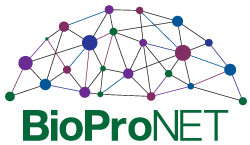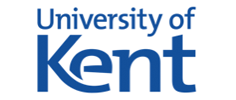BioProNET recently funded 7 Industrial Biotechnology Seeding Catalyst Award. These awards were designed to accelerate translational research by developing and progressing research along the technology readiness level (TRL) pathway, increasing business—academic engagement and company leverage on innovation activities, as well as generating data to support applications for larger grant funding. Below are the key aims and outcomes from each of these projects.
Download a pdf here
Learning from charge interactions in nature to understand poly-anion/cation complementarity in drug encapsulation
PI: Jim Warwicker, University of Manchester
Partner company: MedImmune (letter of support)
Project aims
Nucleic acid-based therapeutics are susceptible to degradation, and so are combined with carrier molecules to improve their formulation. This computer-based project compared charge densities — a key consideration in matching nucleic acid to carrier molecules — in formulations and in naturally occurring complexes of nucleic acids and partner molecules.
Key findings
Our major observation was that both positive and negative charge is used by proteins to pack nucleic acid. We infer that negative charge is used to ‘shape’ nucleic acid conformation, coupled with the counter-ioning effect of positive charge. This finding could impact on the design of nucleic acid delivery systems, since it goes beyond a simple view of charge complementarity.
Next steps
A manuscript is in preparation, and data generated from this project will be added to the Protein Sol database.
Establishing a prototype process for manufacturing non‐therapeutic biologics expressed in plants for the R&D market
PI: Anil Day, University of Manchester
Partner company: Protein Technologies (in-kind funding)
Project aims
We have previously developed a low cost, high yield and sustainable leaf-based system for the manufacture of recombinant proteins. This project focused on the steps required to commercialize the technology by streamlining the processing needed to make the final purified and active cytokine protein product from leaf biomass as well as conducting market research and due diligence.
Key findings
Our main output was an increased cytokine yield from leaves, identification of a cheaper combination of reagents to enable protein refolding and movement of three key steps (growth of biomass, initial purification from chloroplasts, refolding) from TRL4 to TRL5/6 to produce a prototype process. Our evaluation of the patent landscape concluded we had freedom to operate in this area.
Next steps
We have recruited an MSc research student to support the downstream processing steps and a BBSRC Postdoctoral Innovation Fellow to work on the project at the industrial partner.
Engineering secretory capacity in S. cerevisiae strains to improve recombinant protein production yield
PI: Campbell Gourley, University of Kent
Partner company: Novo Nordisk (letter of support)
Project aims:
We have previously identified genetic alterations in the budding yeast Saccharomyces cerevisiae that greatly improves its capacity to produce recombinant protein. This project will demonstrate that the identified genetic changes will lead to the increased production of a high value recombinant protein as proof of principle to present to a new industrial collaborator.
Key findings
We cloned and expressed human serum albumin in S. cerevisiae and are currently analyzing RNA sequencing results to determine the gene expression changes that occur in S. cerevisiae cells lacking STE12, a mutation that leads to enhanced recombinant protein production.
Next steps
We are discussing how best to move our findings into industrial strains in partnership with Novo Nordisk.
Enhancing secretory pathway function to allow selection of host cell clones
PI: Lisa Swanton, University of Manchester
Partner company: SAL Scientific (in-kind funding)
Project aims
We will set up a new system to measure how quickly cells can secrete recombinant protein, to determine cell growth conditions that maximize the secretion of biopharmaceuticals. We will exploit the ‘RUSH’ system, whereby a tagged cargo protein accumulates in the ER (by binding to an ER-resident ‘hook’ protein), which can be released by the addition of biotin to the culture, causing a wave of cargo protein to exit the ER synchronously.
Key findings
We found CHO cell lines had morphology unsuitable for high resolution imaging, so we transiently transfected HeLa cells with each of the constructs developed and examined the localisation of the ER hook and the erythropoietin reporters in the absence of biotin and addition of biotin. The majority of these behaved as predicted – being retained in the ER the absence of biotin and progressing to the Golgi upon addition of biotin. These findings helped move the work between TLR3 and TLR4.
Next steps
The academic and industrial partners have secured an iCASE studentship to take the project forward.
Pilot production of engineered nucleases with applications in molecular biology and diagnostic devices
PI: Jon Sayers, University Sheffield
Partner company: Bioserv UK (in-kind contribution and outsourcing)
Project aims
Nucleases are central to a huge molecular clinical diagnostics industry. Previous attempts to facilitate industry uptake of a 5’-nuclease that is part of the Taq polymerase system have been hampered by our inability to provide sufficient high-quality samples for evaluation. The aim of this project is to scale-up production of our engineered enzyme in partnership with an accredited manufacturer.
Key findings
We constructed two inducible, IP-free, expression vectors based on strong bacteriophage promoter sequences suitable for nuclease expression. We evaluated expression of three variant Taq polymerase (TaqPol) proteins in these vectors systems. Protocols were developed for purification of a novel TaqPol-protein, and we passed these on to BioServ UK, together with the specific Taq polymerase overproducers.
Next steps
We expect to receive commercially produced prototype enzyme batches soon, which will allow evaluation by end users at TLR 7/8. Mutant TaqPol proteins will be put into crystallization trials for provide pilot data for a for BBSRC grant submission.
Optimization of influenza vaccine manufacturing through inhibition of autophagy
PI: Jeremy Rossman, University of Kent
Partner company: Medimmune (in kind funding)
Project aims
This vaccine manufacturing process is optimized for spherical viruses, yet influenza viruses can form filamentous virions. This research will disrupt cellular autophagy systems — which are essential for viral filament formation whilst being dispensable for virus replication — in order to produce uniformly spherical morphology that can enhance the efficiency of influenza virus vaccine manufacturing.
Key findings
We created a viral mutant that could not interact with the host autophagy system by introducing point mutations in the LC3-interacting region of the M2 protein. Importantly, when this mutant was engineered into a representative live recombinant influenza virus strain, filament morphology was eliminated whilst high-titer growth was retained. While creating a stable cellular system for the inhibition of autophagy, we found that the cells rapidly died during influenza infection; work is underway to see if this will impact vaccine production.
Next steps
An MRC research grant application is underway, investigating the intersection between autophagy, apoptosis and influenza virus replication. The data will also form the basis of a manuscript to be submitted to the Journal of Virology.
Improved microfluidic devices for downstream bioprocess separation of sub-micron targets
PI: Alan Goddard, Aston University
Partner: uFraction8 (in-kind contribution, outsourcing)
Project aims
Current separation techniques for the removal of cells or particles from large volumes of liquid can destroy the cells and contaminate the liquid. This project will characterise novel, gentle, low energy devices developed by uFraction8 using fluid flow at very small scales to enable efficient particle separation.
Key findings
Liposomes were successfully extruded through devices of 4 different sizes (30, 100, 400 and 1000 nm diameter) without loss of liposome stability during separation. Demonstration that there can be sub-micron separation using these devices has shifted the work from TRL2 to TRL3 and potentially TRL4 if we can enhance the separation and ensure that the particles are completely stable.
Next steps
We will build on the data generated here to design chips with varying geometries for enhanced particle separation.







